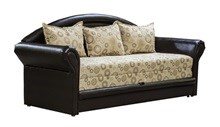Furniture retail stalked by uncertainty
Retailers are facing tough times but the furniture sector is having the toughest time of all. "Furniture is an unmitigated disaster," says Absa Asset Management analyst Chris Gilmour.

© alexcrysman - Fotolia.com
A disaster long in the making, furniture sales have fallen from 7.5% of total retail sales to 5.3% over the past 10 years. The 2013 fourth quarter was especially devastating. Because unsecured credit extension had been curbed harshly, the furniture sector's year-on-year sales dived by R1,04bn (9.1%) in an overall retail market where sales grew 6.8%.
"Furniture retailers are their own worst enemies," says independent retail analyst Syd Vianello "Add-on charges [administration fees and insurance] have made furniture unaffordable."
Furniture is also heavily overtraded. The big three groups alone have more than 2600 stores combined, split between African Bank's (Abil) Ellerines (1025), Steinhoff's JD Group (960) and Lewis (636). The total almost matches the 2800 Shoprite, Spar and Pick n Pay SA food stores, which boast combined sales of more than five times those of the entire retail furniture sector.
Change is necessary
"SA's furniture market is in need of a big shake-up," Steinhoff CE Markus Jooste told the Financial Mail last year. The shake-up will no doubt include JD Group.
Hit by an avalanche of bad debt, JD plunged to a R133m headline loss in the six months to December. Positioning itself to take decisive action, Steinhoff upped its stake in JD from 56% to 86% in April through a tender offer to minority shareholders.
"JD is looking aggressively at brand rationalisation. Store closures will follow soon," says Lewis CE Johan Enslin.
"Lewis is the only furniture retailer to come through with dignity," says Gilmour. Where centralised debt collection used by its rivals has failed, Lewis's "old-fashioned model" has spared it from huge damage from bad debt, he says.
"Our model relies on stores being managed by people drawn from the local community," says Enslin. "Selling and debt collection are the responsibility of managers who, if need be, go door-to-door to collect payments."
The model proved its worth in Lewis's year to March. Though sales dipped 2.5% to R2,4bn, this represented a solid market share gain. By comparison, Ellerines' sales dived 28%, to R1,1bn in Abil's year to March, while JD's fell 15%, to R6bn in the six months to December.
Higher bad debt provision reduced Lewis's headline EPS by 8.6% but it held its dividend. "Holding the dividend shows confidence in our business model," says Enslin. Lewis's dividend yield is now a priced-for-disaster 8.3%.
If not disaster, Vianello sees "turmoil" ahead for furniture retailers, including Lewis, in what he believes will be a big fall in industry store numbers nationwide over the next three to five years.
Time to sell Ellerines
The big conundrum is Ellerines, acquired by Abil in late 2007 for R9,85bn and responsible for more than a third of the troubled bank's R3,1bn headline loss in the six months to March. Though Abil is putting on a brave front on Ellerines' prospects, selling it would be best.
Enslin has his doubts. "If anyone had wanted it, they would have moved by now," he says. Vianello and Gilmour agree and believe Ellerines will be sold piecemeal.
JD, despite its problems, could buy the core Ellerines brand, Vianello believes. "It is a strong brand. JD could consolidate it with its own two low-income brands," he says.
As for other Ellerines brands such as Geen & Richards and Dial-A-Bid, Vianello says private entrepreneurial buyers are the answer. For other brands such as Furniture City, closure is the only answer, he says.
It all makes for a furniture sector fraught with uncertainty. Equity investors eyeing Lewis for its yield or JD on its recovery prospects must ask themselves if it is worth the risk.
Source: Financial Mail